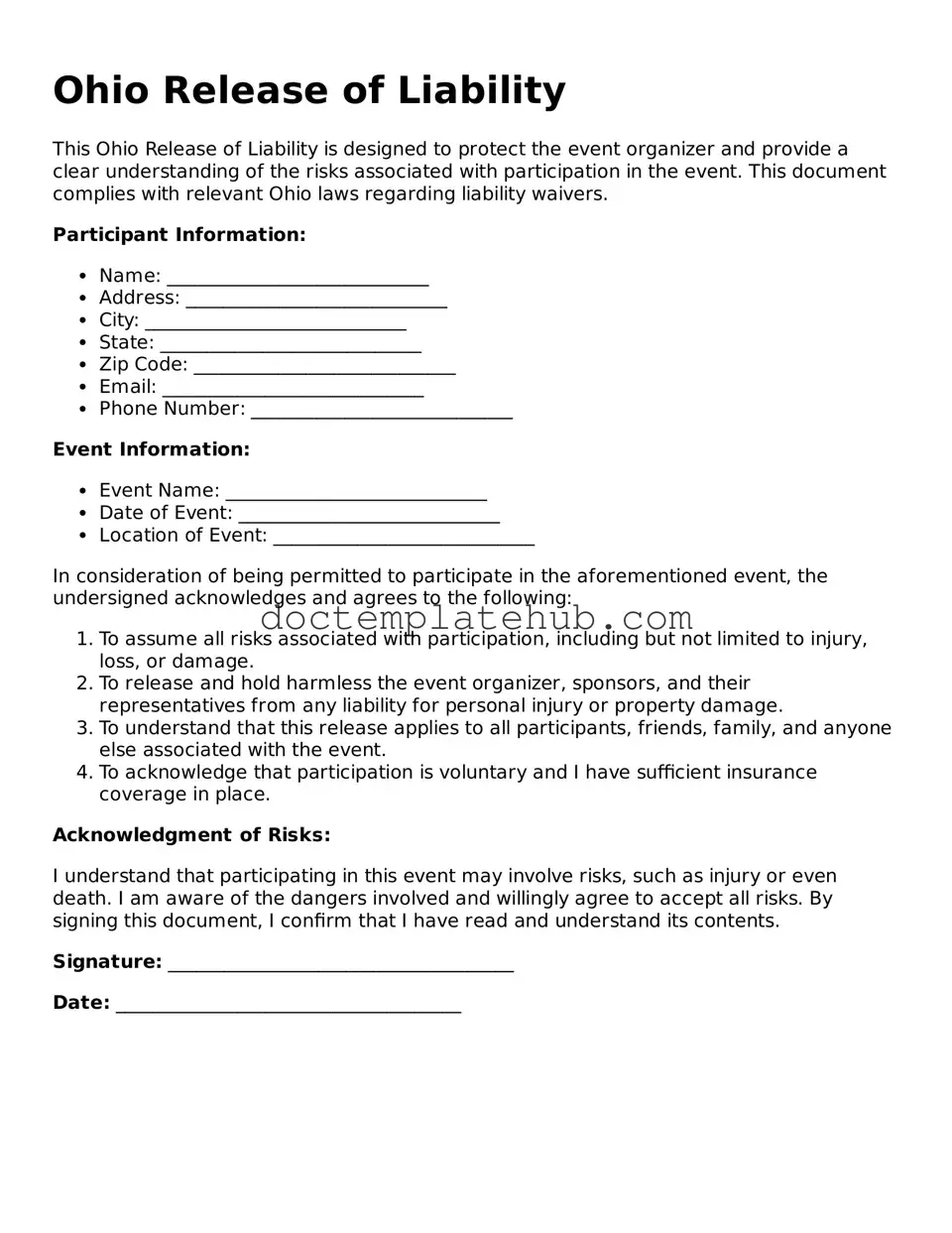What is an Ohio Release of Liability form?
The Ohio Release of Liability form is a legal document that protects individuals or organizations from being held responsible for injuries or damages that may occur during an activity or event. By signing this form, participants acknowledge the risks involved and agree not to hold the organizer liable for any injuries sustained.
Who should use a Release of Liability form?
This form is commonly used by businesses, event organizers, and individuals who host activities that carry inherent risks, such as sports events, recreational activities, or workshops. It is beneficial for anyone who wants to mitigate their legal exposure in case of accidents.
Is a Release of Liability form enforceable in Ohio?
Yes, a properly drafted and executed Release of Liability form is generally enforceable in Ohio. However, it must meet certain legal requirements, such as being clear, unambiguous, and voluntarily signed by the participant. It is always wise to consult with a legal professional to ensure compliance with state laws.
What should be included in the form?
The form should include the names of the parties involved, a detailed description of the activity, acknowledgment of risks, and a clear statement of release. Additionally, it should specify that the participant understands the risks and agrees not to hold the organizer liable for any injuries or damages.
Can minors sign a Release of Liability form?
Minors cannot legally sign contracts, including a Release of Liability form. Instead, a parent or guardian must sign on their behalf. This signature should indicate that the parent or guardian understands the risks and agrees to the terms of the release for their child.
Do I need a witness or notary for the form?
While it is not a legal requirement in Ohio to have a witness or notary for a Release of Liability form, having one can add an extra layer of validity. A witness can confirm that the participant signed the form voluntarily, which may be beneficial in case of disputes.
How long is a Release of Liability form valid?
The validity of a Release of Liability form does not have a specific expiration date. However, it is advisable to review and update the form periodically, especially if the nature of the activity changes or if there are updates in the law.
Can I customize the Release of Liability form?
Yes, you can customize the form to fit your specific needs. It is important to tailor the language to accurately reflect the risks associated with your activity and the terms of the release. Customization helps ensure that the form is relevant and comprehensive.
What happens if someone gets injured despite signing the form?
If someone is injured after signing the Release of Liability form, the enforceability of the release will depend on various factors, including the circumstances of the injury and the clarity of the form. The form may protect the organizer from liability, but exceptions can exist, particularly in cases of negligence or willful misconduct.
Where can I obtain an Ohio Release of Liability form?
You can obtain an Ohio Release of Liability form through various sources, including online legal form providers, local legal offices, or by consulting with an attorney. Ensure that the form you choose is specific to Ohio laws and meets your needs.
